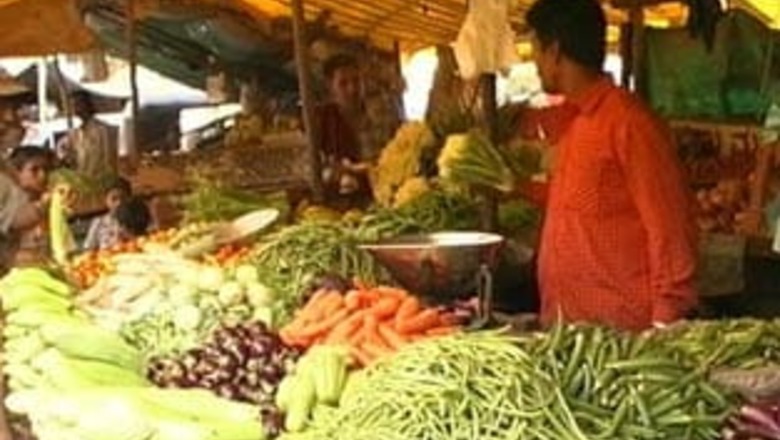
views
New Delhi: Prices of potatoes, tomatoes and pulses in the national capital have risen to such an extent that some harried families even find meat a cheaper option.
Not just exotic broccoli and mushrooms but the relatively affordable tomatoes, onions and potatoes -- basic ingredients in most Indian meals -- are moving away from the common man's reach as prices continue to soar because of erratic and low rainfall in major pulse- and vegetable-producing states.
The prices of potatoes and onions have increased over the last few days to as much as Rs 20 and Rs 25 a kilo respectively at retail outlets in the national capital. The price of tomatoes has similarly shot up to almost Rs 40 a kilo. A kilo of dal (pulses) costs as much as Rs 40. In each case, the hike is over 25 per cent.
Families are now forced to rethink their daily menus, or patronise the local Mother Dairy outlets where prices are lower.
For Kritika Sharma, the soaring prices of vegetables have put her household budget in a state of disarray.
"It is ridiculous, the prices are just shooting up. Vegetable sellers refuse to bend. I could haggle before, but now they refuse to listen and say that the wholesale rate has gone up too," she said.
The high prices are especially affecting lower middle class families.
Hemant Singh, a peon at a private firm here, said that vegetables at current prices are not even an option for his family of eight.
"Earlier for each meal we required three kilograms of vegetables. Now even the cost of pulses has doubled and we needed to cut down on these too. So instead we are now buying half a kilo of meat at Rs.50 -- that makes better sense," said Singh, whose family survives on his monthly salary of Rs.6,000.
Others are trying to alter their menu by making one vegetable dish with rice or bread.
Annie, a student sharing a room with two friends, does not go to her usual vegetable vendor but instead walks a good distance to get vegetables at a controlled price.
"A vegetable vendor sits right next to where I stay. Yet since the prices have escalated so much, I am left with no choice but to travel to the Mother Dairy shop where prices are more reasonable. Also I have started buying veggies in bulk instead of every day," she said.
According to Sunil Bansal, the chief executive officer (fruits & vegetables) at Mother Dairy, the adverse weather conditions have had an impact on vegetable prices.
"However the prices of fruits and vegetables at Safal shops of Mother Dairy are comparatively lower than market prices. This is possible because of the strong procurement network we have with farmers," Bansal said.
Authorities at the Agricultural Produce Marketing Committee (APMC) say that things are likely to improve in the coming weeks.
"The potato crop in West Bengal was spoilt and that affected the market here and retailers have taken advantage. The Punjab crop is due and things will improve in a few days," S. Yadav of APMC informed media persons.
Similarly, the tomato prices too are likely to stabilise and come down. "The drought conditions in many states and the heat had affected the tomatoes which is a perishable item. Now with the rains, the situation is already improving."
Yadav, however, warned that the prices of onions would rise further.
"Maharashtra is the main producer of onions and when the floods hit, which is likely soon, it will be difficult to transport the stock from fields where they are stored. Retailers will take advantage but we planned in a recent meeting that like two years back when the same situation had occurred, the railways would be used to transport onions," Yadav said.
For pulses too, around 80 outlets are being opened across the national capital to sell them at controlled prices. Of the rationing offices, 67 are situated in different assembly constituencies of the capital.
According to the latest estimates of the India Meteorological Department (IMD), there has been a significant improvement in monsoon rain since July 1, with the deficit based on long-term average coming down from 46 per cent to 27 per cent.
Out of India's 36 meteorological sub-divisions, rainfall was deficient or scanty in 29. The IMD has announced the monsoon in the country to be "below normal" this year.
Agriculture Minister Sharad Pawar has admitted that the delayed monsoon was a "serious problem" in northern India.



















Comments
0 comment